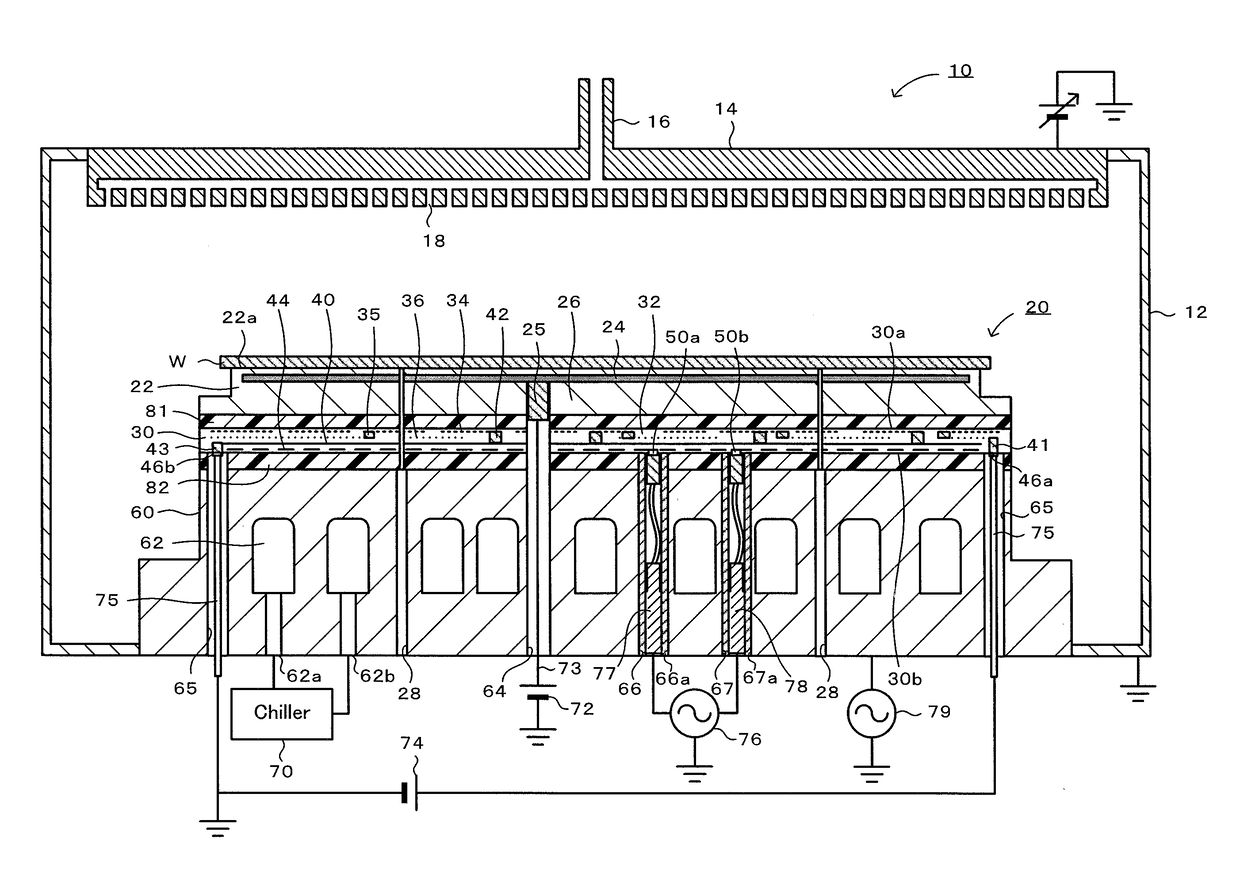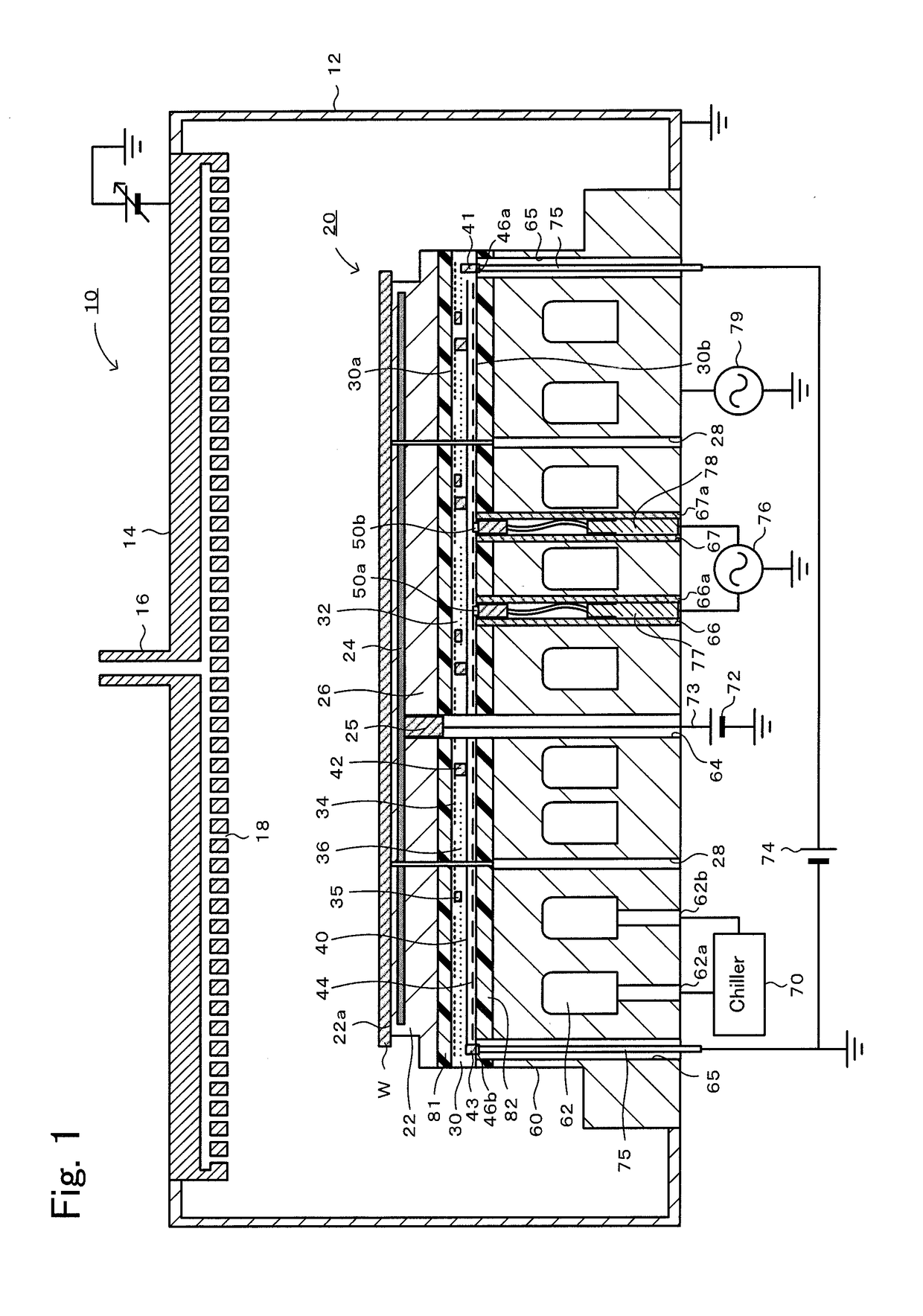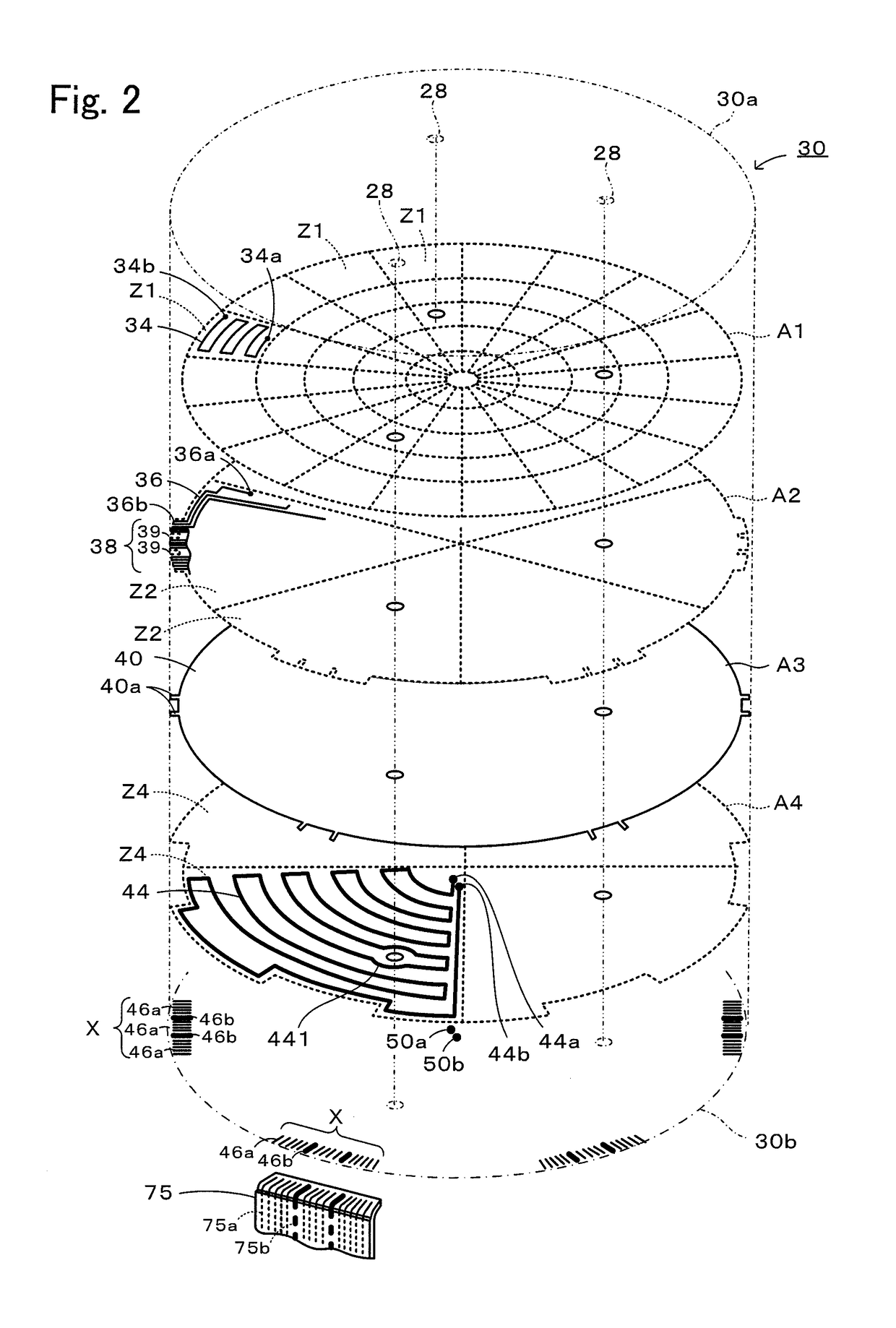Electrostatic chuck heater
a heater and electric chuck technology, applied in the direction of ohmic-resistance heating, ohmic-resistance heating details, electric discharge tubes, etc., can solve the problems of insufficient heat generation amount of the heater in a zone including a cool spot, inability to apply, and insufficient temperature, so as to reduce resistance and reduce resistance. the effect of large width and reduced resistan
- Summary
- Abstract
- Description
- Claims
- Application Information
AI Technical Summary
Benefits of technology
Problems solved by technology
Method used
Image
Examples
Embodiment Construction
[0015]A preferred embodiment of the present invention will be described below with reference to the drawings. FIG. 1 is a cross-sectional view illustrating a general configuration of a plasma processing apparatus 10, and FIG. 2 is a perspective view illustrating an internal structure of a sheet heater 30.
[0016]The plasma processing apparatus 10, which is a semiconductor manufacturing apparatus, includes a vacuum chamber 12, a shower head 14, and an electrostatic chuck heater 20, as illustrated in FIG. 1. The vacuum chamber 12 is a container formed to have a box shape by using an aluminum alloy or the like. The shower head 14 is provided on a ceiling surface of the vacuum chamber 12. The shower head 14 emits a process gas supplied through a gas introduction pipe 16, from a large number of gas injection holes 18, to the inside of the vacuum chamber 12. In addition, the shower head 14 plays a role of a cathode plate for generating plasma. The electrostatic chuck heater 20 is an apparat...
PUM
 Login to View More
Login to View More Abstract
Description
Claims
Application Information
 Login to View More
Login to View More - R&D
- Intellectual Property
- Life Sciences
- Materials
- Tech Scout
- Unparalleled Data Quality
- Higher Quality Content
- 60% Fewer Hallucinations
Browse by: Latest US Patents, China's latest patents, Technical Efficacy Thesaurus, Application Domain, Technology Topic, Popular Technical Reports.
© 2025 PatSnap. All rights reserved.Legal|Privacy policy|Modern Slavery Act Transparency Statement|Sitemap|About US| Contact US: help@patsnap.com



